
Logan and Albert Conservation Association


Your action can make a difference! Contact the Prime Minister, the Federal Environment Minister The Hon Tony Burke MP This email address is being protected from spambots. You need JavaScript enabled to view it. and Queensland senators to express your concerns.
Make it clear what you are asking for:
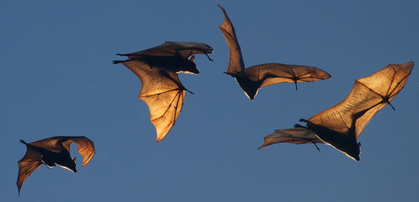
Queensland Bat Advocacy and campaign group Don't Shoot Bats certainly does not. Speaking for the Don't Shoot Bats campaign, Dr Carol Booth condemned the move as retrograde, anti-conservation and cruel and remarked on the irony of releasing the statement on National Threatened Species Day. Grey-headed and Spectacled flying-foxes are listed as vulnerable under national environmental laws.
LACA cannot agree when the Environment Minister says he is taking a 'balanced' approach. Species are listed as threatened when their future is in the balance, so what is balanced about shooting them? There is nothing balanced about sanctioned cruelty.
Great suffering will result from the re-introduction of shooting: it is inevitable that some of those shot will die slowly of their wounds, and young deprived of their mothers will die of thirst or starvation.
Fruit growers have cost-effective alternative methods of crop protection. Most do the right thing and protect their crop by nets and other non-lethal means. It should be expected of all.
Just three months ago the Queensland Agriculture Minister said 'It's important every Queenslander understands animal cruelty is never acceptable.' See his statement here.
Read Shooting threatened flying-foxes legalised on Threatened Species Day media release here.
, Policies and Campaigns Manager, Wildlife Queensland reports that shooting has been demonstrated to be ineffective and Horticultural experts advise that netting is the only effective method to prevent significant economic loss.
"Killing listed species, particularly when population numbers are not known with any certainty, is a major concern. Where will it stop? What will be next?" Read Wildlife Queensland here
You can help by completing online survey and writing to your local council and state representative.
We can also become more informed of issues relating to threatened species.
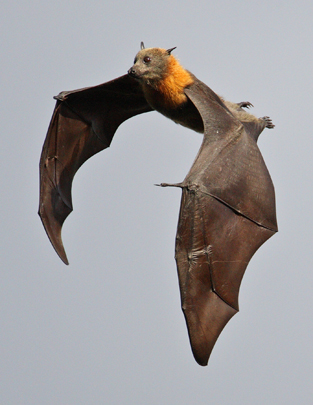 The announcement on Threatened Species Day of a permit to kill flying-foxes is not well received by concerned wildlife groups and animal welfare groups. It is unbelievable spin by Environment Minister Andrew Powell that "This is about giving greater control to farmers over managing their crops while striking a balance with animal welfare and conservation."
The announcement on Threatened Species Day of a permit to kill flying-foxes is not well received by concerned wildlife groups and animal welfare groups. It is unbelievable spin by Environment Minister Andrew Powell that "This is about giving greater control to farmers over managing their crops while striking a balance with animal welfare and conservation."
Humane shooting [at night], agreed limits with quotas per species, no impact on the long term survival of the four flying-fox species, DMPs only issued as an absolute last resort.
The Australasian Bat Society (ABS) condemned the move, saying that it is worrying that native species can be considered as pests and subjected to inhumane methods for control. The ABS does not support the shooting of flying foxes in any situation.
Dr Booth, a biologist from the Don't Shoot the Bats Campaign, says flying foxes are nocturnal feeders and most shootings are likely to occur at night. You can't patrol an entire orchard all night with a shotgun. Proper netting, with tiny holes, is a much more humane and far cheaper solution.
The correct netting is essential as many flying foxes die an agonising death trapped in loosely draped black throw-over netting . There were more than a million gray-headed flying foxes on the east coast last century but numbers had fallen to about 300,000.
Each bat spreads 60,000 to 90,000 seeds in our national forests so without these guys our forests are in big trouble.
Read about importance of flying-foxes here and damage mitigation permits here both on EHP WEBSITE.
Fruit growers may be happy but non compliance of any policy is usually up to community being the watchdog. The future of our flying-foxes and forests they pollinate are now in jeopardy.
According to Minister Powell these new laws have been developed with input from growers, conservationists and animal welfare advocates and he is confident they've got the balance right. this writer is very sceptical of that spin.
Learn more abouts bats at Australasian Bat Society and their facebook page
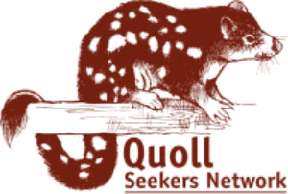 Quolls are endangered nationally and need our help! Sightings have been received from the Jimboomba / Logan area as well as other areas of former Beaudesert - Greenbank, Park Ridge and more. This is an opportunity to come along and find out if quolls really do live in your area, and what you can do to help them.
Quolls are endangered nationally and need our help! Sightings have been received from the Jimboomba / Logan area as well as other areas of former Beaudesert - Greenbank, Park Ridge and more. This is an opportunity to come along and find out if quolls really do live in your area, and what you can do to help them.
Sunday 5 August 10am – 1.00pm at Caddies Community Care Centre 19-33 South Street, Jimboomba
Leading quoll researcher Dr Scott Burnett will give presentations and answer questions about quolls, threats to their survival and what can be done to prevent these animals from becoming another extinction statistic.
Come and meet a live spotted-tailed quoll courtesy of Martin Fingland from Geckoes Wildlife Presentations.
RSVP: 31 July 2012 to This email address is being protected from spambots. You need JavaScript enabled to view it. or phone Alina at Wildlife Queensland on 3221 0194.
Logan and Albert Conservation President Anne Page has been collating and reporting sightings of quolls for several years. A reported sighting is always followed up to confirm veracity of sighting. Two road kill about 2005 were first sightings for 70 years.
These cryptic nocturnal creatures cover wide ranging bushland areas to feed and breed. Their continued existance is threatened by loss of habitat - clearing for development and roads and our road traffic.
Come along and learn more to help save them from local extinction.
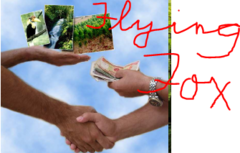 Headlines and articles in papers almost always report our human fear of the flying fox or fruit bat - our important pollinator for gums and rainforests. The emotive language used in a recent post The battle brewing over bats, the pariah of Australian wildlife does little to settle fears.
Headlines and articles in papers almost always report our human fear of the flying fox or fruit bat - our important pollinator for gums and rainforests. The emotive language used in a recent post The battle brewing over bats, the pariah of Australian wildlife does little to settle fears.
The fear of bats is being exploited by many press. Death directly related to flying foxes is minimal - 6 since 1994 while more than 30000 children die daily from polluted water supplies. More horses have died from other causes eg culling and toxic weeds in the paddock than have died from Hendra. Understanding the ecology of natural systems and the interaction of all the biodiversity interacting together - biodiversity infrastructure - is critical to our human survival on the planet.
TEEB The Economics of Ecoysytems and Biodiversity a tool which places a monetary value on the services and goods that nature provides humans on a global scale. Yet we fail to consider these seriously when politicans and planners make decisions about human settlement and our creature comforts. We have cleared great swathes of land that would have provided habitat. The value of these services are being considered internationally - but not locally or at state level.
Elsewhere in the world urban dwellers are learning to live with brown bears and understand that what we do can attract them and also distract them away.
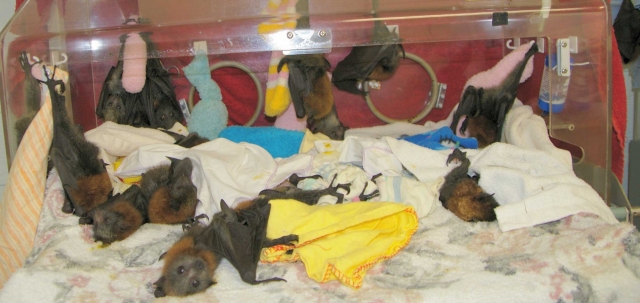 Baby bats in care are raised in a nursery situation and are cute and cuddly - if you've been vaccinated. Dogs with rabies is a health threat currently in Bali but travellers take the precaution of vaccination.
Baby bats in care are raised in a nursery situation and are cute and cuddly - if you've been vaccinated. Dogs with rabies is a health threat currently in Bali but travellers take the precaution of vaccination.
Learning to live with our native species - our wildlife - is critical for our human wellbeing on our one planet. Drastic actions to interfer with the ecology of other species may bring about unwanted and unplanned reactions.
The folk at Gayndah may have displaced some species of flying fox - or did they move of their own accord? I believe the black flying fox is now looking for a roost in the area.
Teaching with cruelty and fear is a method many of us have discarded. Respect for all species and their niche in the global system is long overdue.
Teviot Downs residential DA declared a 'controlled action'.
 A decision on 12th October last week by the Federal Government on the Teviot Downs residential DA has declared it a 'controlled action'. This means that the proposed development now requires assessment and approval under the Environment Protection and Biodiversity Conservation Act ( EPBC Act) before it can proceed.
A decision on 12th October last week by the Federal Government on the Teviot Downs residential DA has declared it a 'controlled action'. This means that the proposed development now requires assessment and approval under the Environment Protection and Biodiversity Conservation Act ( EPBC Act) before it can proceed.
The controlling provisions included were listed threatened species and communities ( section 18 and 18A EPBC Act) and Commonwealth land ( sections 26 and 27A in the EPBC Act) . One of the threatened species of significance in the area around the proposed Teviot Downs residential estate is the federally endangered spotted tail quoll.
The Federal government will now assess the preliminary documentation for the proposed development and the Federal Environment Minister, Mr Tony Burke, will make a decision on whether to not approve, approve or approve the proposed development with conditions.
LACA's President, Anne Page, welcomed the decision by the Federal government. She said, "The spotted tail quoll is listed as an endangered species under the EPBC Act. Residents continue to report sightings of quolls in our local area and this decision highlights the importance of residents reporting wildlife sightings in our local area."
 The Queensland Government is running an online discussion forum on Friday 23 September from 12 pm to 1.30 pm. The forum, titled
The Queensland Government is running an online discussion forum on Friday 23 September from 12 pm to 1.30 pm. The forum, titled
'Flying foxes, your animals and you', will be streamed live online on the flying foxes and Hendra virus online information session page and on the
Biosecurity Queensland Facebook page.
Watch a panel of experts address the myths and clarify the facts around flying foxes and Hendra virus.
Submit a question for the expert panel or find out more information from the flying foxes and Hendra virus online information session
Avoiding Hendra is easier than killing bats and pending release of a vaccine against Hendra virus, managing the immediate risk to horses and humans is simple – follow simple hygiene and feed management practices that reduce horse and horse feed exposure to bats and their excretions. Hendra virus is a zoonotic disease, which means it can transfer from animals to people. Hendra virus can cause disease in horses but only rarely causes disease in humans. See links to detailed information about Hendra virus from QG DPI website
The panel experts coming together to answer your questions are:
Mr Clive Cook, General Manager, Department of Environment and Resource Management
Dr Michael Cleary, Queensland Health's Acting Chief Health Officer
Dr Rick Symons, Biosecurity Queensland's Chief Veterinary Officer
Dr Hume Field, Biosecurity Queensland's Principal Scientist
If you have an urgent enquiry or suspect a possible Hendra case, notify Biosecurity Queensland on 13 25 23 (business hours) or
the Emergency Animal Disease Watch Hotline on 1800 675 888 24 hour hotline
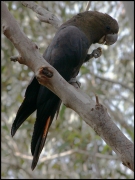 LACA - Logan and Albert Conservation Association - will present a Glossy Black Cockatoo Workshop, presenting a comprehensive overview of this magnificient bird which is
LACA - Logan and Albert Conservation Association - will present a Glossy Black Cockatoo Workshop, presenting a comprehensive overview of this magnificient bird which is
sliding towards a "threatened" existence.
This is followed by a tour of the Glossy Conservation project at Mt Barney Lodge.
This workshop is sponsored through Scenic Rim Council environment grant to LACA and is hosted free of charge by Mt Barney Lodge.
Dr Guy Castley from Griffith University and lead research member will be guest presenter.
Well known SEQ bird person Rod Bloss from Brisbocca will also present on the day.
LACA, Mt Barney Lodge, Scenic Rim Council, Dr Guy Castley and Rod Bloss are all connected with the GLOSSY BLACK CONSERVANCY
 The flying fox is at the forefront of many newspaper stories since the 2011 outbreak of Hendra. All horses that are tested positive are euthanized if they do not die of virus first. This is because of difficulty of keeping the large animal within required biosecurity framework.
The flying fox is at the forefront of many newspaper stories since the 2011 outbreak of Hendra. All horses that are tested positive are euthanized if they do not die of virus first. This is because of difficulty of keeping the large animal within required biosecurity framework.
While it is a tragedy to lose any human life ,4 of 7 people exposed to Hendra have died - all men, it is understood that Hendra cannot be transmitted directly from the bat to a human - the horse is needed as an intermediary for the human to contract the virus. Why are communities more upset about this possibilty than deaths on roads, death from air pollution, deaths from accidents in hospitals, deaths from coal mining accidents to name just some of many.
Do we assume that when humans cause death from accidents it is an unavoidable part of living in our society? We can contract may illnesses directly from animals such as cats, dogs, cows, pigs and more. These are called zoonoses. Zoonotic diseases can spread through a variety of means such as working closely with livestock, household pets, exhibited animals or wildlife, by coming in contact with soil or water contaminated by animals.
Practising good personal hygiene, wearing protective clothing, maintaining healthy animals and undertaking vaccination where appropriate, can minimise the risk of some animal-borne diseases infecting people.
DPI have information about protection of horses on their website here.
Flying foxes often visit properties where native eucalypts, bottlebrushes, lilly-pillies, figs and melaleucas are flowering. Blossoms are their primary source of food. They will also feed on palm seeds and exotic fruits when native food is less abundant.
Horse owners should follow these steps to reduce the risk of their horses becoming infected with Hendra virus:
Australian Bat Lyssavirus is caused by a bite or scratch from an infected bat. Carers pay over $200 of their own money to be vaccinated so they can care for injured / orphaned bats.
IT IS ESSENTIAL YOU DO NOT ATTEMPT TO CATCH OR MOVE FLYING FOXES / BATS UNLESS YOU HAVE BEEN VACCINATED.
You can read more about Zoonotic diseases at DPI website here.
A 300,000-strong bat colony is set to be "moved on” from Gayndah in the next five weeks – but where it will go, nobody knows. North Burnett Regional Council workers will start cutting branches from the trees where the animals roost in about five weeks time. It is a move that will pave the way for future flying fox colony relocations, with the Department of Environment and Resources pouring $40,000 into monitoring the impacts of dispersing the animals and the risk of spreading hendra virus. "We have to wait about five weeks until the little bats are able to fly before we move them on,” Mayor Joy Jensen said. "Where are these bats going to go? No one knows. But the permit has been granted for the full township of Gayndah so at least we know we can work on them until they leave.” Ms Jensen said residents were sick and tired of the bats, which not only posed a health risk but had caused "immeasurable” damage to the town’s riverbank since they arrived in September last year. A number of businesses had also been hit hard by the "smelly” and "noisy” colony, particularly the ones located along the river. "There has been no explanation as to why they’re in such large numbers. It’s an unbelievable sight to see that many bats hanging in so few trees,” Ms Jensen said. Anyone who couldn’t understand why residents were so distressed should come and have a look for themselves, Ms Jensen said. "It hasn’t been a pleasant situation and it’s driven a lot of people to say and threaten to do a lot of things they wouldn’t consider under normal circumstances. "Residents feel the bats were given priority over them.” *Fraser Coast Chronicle
 The elusive cryptic spotted-tailed quolls are around with many sightings recorded in Greenbank, North Maclean, Chambers Flat and nearby areas.. Wildlife Queensland have a QUOLL SEEKERS NETWORK. The image is that of a quoll in captivity at Currumbin Wildlife Sanctuary on the Gold Coast.
The elusive cryptic spotted-tailed quolls are around with many sightings recorded in Greenbank, North Maclean, Chambers Flat and nearby areas.. Wildlife Queensland have a QUOLL SEEKERS NETWORK. The image is that of a quoll in captivity at Currumbin Wildlife Sanctuary on the Gold Coast.
Australia has four species of quoll: the spotted-tailed, the northern, eastern and western quoll. The spotted-tailed quoll and the smaller northern quoll are both found in Queensland. Spotted-tailed quolls are Australia's largest native marsupial carnivore.
QSN Quoll Seekers Network is free to join and welcomes and encourages new members. There is also a quoll sightings form which LACA encourages you to use. We also ask that if you see a spotted-tailed quoll in Logan or Scenic Rim areas you contact LACA President Anne Page This email address is being protected from spambots. You need JavaScript enabled to view it.. This species is federally protected under EPBC Act which means that development which could potentially impact on the survival of the species should be referred to the federal government.
Location map for species is available here. and the draft "significant impact" guidelines can be accessed here.
 GREENBANK QUOLL WORKSHOP INFO DAY
GREENBANK QUOLL WORKSHOP INFO DAY
Wildlife Queensland would like to invite you to a special Quoll Seekers Network event!
What: Quoll Discovery Day
When: Sunday 30 October 2011 from 10am - 1.00pm
Where: Greenbank Sport and Recreation Club, 720 Middle Rd, Greenbank, Logan City, south of Brisbane.
Who: Leading quoll researcher Dr Scott Burnett; QSN project officer, Alina Zwar and a live quoll or 2 with Martin Fingland from Geckoes Wildife Presentations.
Why: To share knowledge about local quoll sightings and find out how to get involved with the surveys.
RSVP by 24 October to This email address is being protected from spambots. You need JavaScript enabled to view it. or phone Alina or Ewa on 3221 0194.
The spotted-tailed quoll is a cryptic creature - unlike its northern cousin which is highly visible in its habits and habitat close to humans. Our local quoll has been unseen in this area for over 70 years until road kill was taken by a local cyclist to the Queensland museum for identification a few years ago. This was positively identified as spotted-tailed quoll. Not a lot is really understood about these local wildlife creatures except that they are extremely elusive and shy. They are carnivorous, feed on road kill and have become road kill, are great climbers and are attracted to chickens, which has also lead to their death by angry farmers before they were listed as nationally endangered by the federal government under the EPBC Act.
Unfortunately there are many threats to the long term survival of many of our local wildlife within the bushland areas of Logan. Loss of habitat is the greatest threat as we clear bushland without adequate flora and fauna studies. There is as yet no legislated necessity for adequate connected core habitat to be conserved. Wild dogs and foxes - and our baiting methods to controll them are also a threat. The introduced cane toad also causes death of quolls.
ADOPT-A-QUOLL program offers one way to help. Find out about it here.
 Fascinating and free reptile workshop
Fascinating and free reptile workshop
Capture your creatures on film after you find them - or they find you!
Brian 'Furry' McLean of Crocodiles and Dragons legend will demonstrate lots of useful information about our local reptile residents so that we can all live together harmoniously.
John McCann – professional wildlife photographer from Nature Pics will provide some secret so we can capture your creatures on film - the only way to catch them.
SATURDAY 6 NOVEMBER 2010
2 – 4.30 pm
CWA Hall Brisbane Street Beaudesert
LACA kindly thanks Scenic Rim Regional Council for funding the workshops through its Community Environmental Assistance Grants Program.
Our local zoologist - ecologist came to our assiatance at the last moment due to unforeseen circumstances. Thank you Ronda Green. Many cameras wer clicking madle as all attendees at our success workshop got very up close camera moments with Furry's creatures which are very used to the public - unlike our shy native animals in their natural habitat.
We hope to post some images soon so stay tuned. The shin of the crocodile is incredibly soft.
SURVEYS or CENSUS COUNTS for two local bird species - Sunday 31 October 2010
Glossy Black Cockatoo and Australian White Ibis.
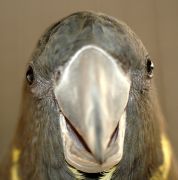
As the Glossy Black Cockatoo may be confused by another black bird, identification workshops are being held for those interested in helping. The Conservancy website has great identification tools as well. Please register at site linked above if you can help.
The Australian White Ibis is a protected native species that plays an important role in their natural wetland habitat. However, drought and inland water management issues have contributed to the White Ibis shifting to urban areas where they have found plentiful food, particularly at waste landfills. As a result, urban White Ibis populations have exploded over the last two decades. They are now often perceived as a 'pest' because of their nuisance value, risk to aviation safety, and impact on biodiversity.
Your participation in this survey will aid the long term conservation and effective management of Australian White Ibis by providing a better understanding of their distribution and abundance throughout Australia. Download a flyer here.Wilderness has entralled man for generations and still does. We may marvel at mankind's innovations and use of technology but we do not always use that technology for improvement. Many have flocked to Canada for the 2010 Olympics. David Suzuki has written...
Those who came to Vancouver for the Games will remember our friendliness and our ability to create a society where people from many backgrounds and cultures can live together. But just as many will remember us for something that has always defined our nation: our spectacular natural environment.
The forests, mountains, rivers, and ocean are visible no matter where you go in Vancouver. The wilderness at Vancouver's doorstep is home to a wide range of plants and animals, especially for a northern temperate region. In much of Canada, you can still find all of the charismatic megafauna that were present at the time of European settlement, including grizzly bears, cougars, wolves, and wolverines.
British Columbia is home to as many as half of Canada's grizzly bears and is one of the Earth's last safe havens for these great animals. In other parts of the world, including Western Europe, Mexico, and the continental U.S., grizzlies and other bears have been driven to extinction or are on the verge of disappearing. Grizzly bears still roam, feed, and breed in much of B.C., whereas in California, this majestic bruin is now only found as an image on the state's flag.
Grizzly bears are an essential part of a healthy ecosystem. Known to scientists as a "keystone" species, grizzlies support plant and forest health by aerating the soil as they dig for roots and pine nuts and by dispersing the seeds of the plants they eat. In coastal ecosystems, such as the Great Bear Rainforest, grizzlies and other carnivores contribute to the magnificence of the landscape through the way they eat salmon. During summer and fall, hundreds of bears congregate along estuaries and rivers to gorge themselves on salmon migrating from the Pacific Ocean to their natal streams to spawn.
Grizzles are messy eaters. As they drag their prey out of the rivers and into the forest, and as they defecate in the woods after feasting on salmon, they help to distribute the nitrogen-rich nutrients from the salmon across the forest floor.
Despite their importance in nature and their vulnerability to human impacts, grizzlies remain unprotected in Canada. Some provinces, such as British Columbia, allow hunters to kill this threatened animal for sport. The trophy-hunting season for grizzlies and other bears in B.C. will open in a few weeks, just as the bears emerge from hibernation.
The extent to which trophy hunters are killing grizzlies in B.C was not fully known until now. The David Suzuki Foundation recently acquired and analyzed thousands of kill records collected by the government. We found that close to 10,000 grizzlies have been legally hunted in B.C. since the government first began tracking kills in the late 1970s. Many hunters come from the United States and Europe, where it is illegal to hunt bears or populations no longer exist.
Our research also shows that trophy hunters are turning many of B.C.'s parks and protected areas into graveyards for bears that are legally slaughtered within park boundaries. We've identified more than 60 provincial parks where grizzly bears are hunted for sport, including Northern Rocky Mountains Park, Spatsizi Plateau Wilderness Park, and Tatshenshini-Alsek Park.
British Columbia has taken steps to protect grizzly habitat by banning some resource activity like logging and mining in protected areas, but these measures are nearly useless without laws that prohibit people from killing bears.
Canadians have always revered the spectacular natural bounty that makes ours one of the most beautiful and prosperous nations on Earth. The prominence given to old-growth forests, salmon, and bears in the opening and closing ceremonies of the Olympic Games in Vancouver demonstrates how important nature is to our national identity and our desire for others to see us as a modern Eden. Yet with this richness comes responsibility.
Ironically, the strongest protection for grizzly bears exists outside of Canada, in places like Mexico where they are no longer found. Canada's wildlife is worth much more than just being an Olympic mascot or a marketing brand to sell to tourists - or a trophy on someone's wall.
In New South Wales the Rifle Sportsman Association has recently been lobbying government to allow its members to shoot 'feral' animals in National Parks and shooting of ducks and flying foxes is still allowed - in season. Surplus animals bred for zoo stock have also been targeted for trophy hunting. The use of firearms for recreational hunting for sport is scarcely justifable in our 21st century world where we now know better the interrelationship of species and the rate of extinction of many species.
Likewise in South East Queensland we are responsible for the feared extinction of our iconic koala. We are destroying the habitat and home of the unique koala to build housing and infrastructure for the expanding human population. While shooting is illegal some have escaped consequences for so doing.
Unless we protect the bushland habitats of the native animals, they will die out within the decade - as surely as we shot them in thousands last century.
350 Species are Threatened by Global Warming
 Saturday 24 October 2009 is the International Day of Climate Action. The Center for Biological Diversity launched a massive new interactive Web site today providing accounts of 350 plants and animals threatened by global warming. Climate change bills require deeper, faster cuts in greenhouse gas emissions, or we won't succeed in reducing atmospheric carbon dioxide to 350 parts per million, dooming these 350 species and many, many more to extinction.
Saturday 24 October 2009 is the International Day of Climate Action. The Center for Biological Diversity launched a massive new interactive Web site today providing accounts of 350 plants and animals threatened by global warming. Climate change bills require deeper, faster cuts in greenhouse gas emissions, or we won't succeed in reducing atmospheric carbon dioxide to 350 parts per million, dooming these 350 species and many, many more to extinction.
Check out the website here . Of particular concern are the two turtles which inhabit the Pacific Ocean - Loggerhead sea turtles and the critically endangered hawksbill sea turtle.
![]() Queensland's attempt to build what it calls "Australia's greenest dam", is about to be put to the test. Green groups and local residents have long argued the project would result in serious environmental damage and one particular issue we are focussing on is the plight of the Australian lungfish.
Queensland's attempt to build what it calls "Australia's greenest dam", is about to be put to the test. Green groups and local residents have long argued the project would result in serious environmental damage and one particular issue we are focussing on is the plight of the Australian lungfish.
ABC 7.30 Report from 5 October 2009 provided an opportunity for community , government and scientists to present their views. The only existing fishway in the world that's been designed for the lungfish is at Paradise Dam, and so far, that's failed to work effectively. Why would Traveston be any different? Burnett Water, the dam operator,applied to have the case adjourned - It will recommence Monday 9 November 2009.
Part of the transcript appears below from http://www.abc.net.au/7.30/ where you can also watch a video of the program.
Glossy Black-Cockatoos are labelled as Vulnerable in Queensland and Threatened on a National Level. Presently, little is known about the current movements of the Glossy's populations and their specific habitat selection.
The Glossy Black-Cockatoo is located in the South-Eastern corner of Queensland, Eastern New South Wales, extending slightly into Victoria with populations known in South Australia and Kangaroo Island.
Glossy Black-Cockatoos are specialized feeders of Allocasuarina seeds (Allocasuarina torulosa, Allocasuarina littoralis) and some Casuarina species (Casuarina equisetifolia). They feed from the seeds located within the barky cone. Allocasuarina species are frequent in the Gold Coast and South-east Queensland region. These trees grow throughout Logan and Scenic Rim Region. Allocasuarina littoralis grows extensively in south west Logan - an area targeted by state government and Logan council as identified future growth areas. Allocasuarina torulosa grows extensively in the ranges and higher ridges of Scenic Rim.
Population
Total population estimates as of 2006 were less then 18 000. As of 2005, there was a declining population of Glossy Black-Cockatoos in Queensland, with estimates of population numbers being between 1000 and 2500. On the Gold Coast population numbers are unknown.
Conservation status and threats
All states in which Glossy Black-Cockatoos are located have been labeled Vulnerable or Endangered. The Australian Government has declared the status of the Glossy Black-Cockatoo, on a national level, as Threatened.
Roosting/breeding trees are being cleared throughout the South-Eastern Queensland region. Suitable trees for breeding are usually large with the presence of hollows in which the cockatoos can adequately roost and breed. Native Australian trees, like Eucalyptus Species, take a considerable amount of time to form large hollows.
Identification
Females can be told apart from males via blotches of yellow located on the head and neck. The head may also be darker then the male. Juveniles will also have a darker head with small spots on the shoulder or breast.
Feeding
Glossy Black-Cockatoos feed on the seeds of Allocasuarina species with the Black She-Oak (Allocasuarina littoralis) being the favored Allocasuarina species. They have been recorded spending approximately 88% of the day foraging for Allocasuarina seeds.
Breeding
Breeding occurs every two years with a single egg being laid in late January to early June with a longer nestling period then any other cockatoos (up to 90 days). Large hollow trees are needed for a breeding site and they are known to have a breeding life span that can exceed 30 years.
Dr Guy Castley from Griffith University is leading The Glossy Black-Cockatoo project which aims to assess the current distribution and habitat use of Glossy Black-Cockatoos in the Gold Coast area in order to ensure that habitat preservation for the Glossy Black-Cockatoo can be made with greater accuracy and ensure their survival in the future.
 International environmental news sources report that Australia's Tasmanian Devil, its population decimated by a facial cancer, was listed as an endangered species on Wednesday by the Tasmanian state government 21 May 2009. msncb.msn.com shows a picture taken on January 13, 2009 of a healthy Tasmanian devil joey (Sarcophilus harrisii) displayed as part of an intensive conservation programme, because of the spread of an infectious facial tumour which gradually disfigures the animal's face to the point it is unable to eat, at Taronga Zoo in Sydney.
International environmental news sources report that Australia's Tasmanian Devil, its population decimated by a facial cancer, was listed as an endangered species on Wednesday by the Tasmanian state government 21 May 2009. msncb.msn.com shows a picture taken on January 13, 2009 of a healthy Tasmanian devil joey (Sarcophilus harrisii) displayed as part of an intensive conservation programme, because of the spread of an infectious facial tumour which gradually disfigures the animal's face to the point it is unable to eat, at Taronga Zoo in Sydney.
Australia's Tasmanian devil is the world's largest surviving marsupial carnivore. This increased risk of extinction status change means that more resources and measures will / can be allocated for greater protection and recovery strategies. Numbers have declined by 70 percent since cancer was first reported in '96.
The deadly and disfiguring facial cancer, which often kills within months, has cut the island state's wild devil population by as much as 60 percent. The Tasmanian Devil faces extinction in 10 to 20 years due to the facial cancer.
"We are committed to finding an answer and saving the Tasmanian Devil for Tasmanians and the world," Tasmanian Primary Industries Minister David Llewellyn said in a statement announcing the change in status from vulnerable to endangered.
The Tasmanian Devil is a carnivorous marsupial about the size of a small muscular dog. It has black fur, gives off a skunk-like odour when stressed, and earns its devil name for its ferocious temperament and disturbing call. The facial cancer is genetically identical in every animal and originated from a single contagious cell line and spread throughout the population by biting during fights for food and mates.
"We are developing and implementing an insurance strategy which has established captive populations around the country, implementing wild management trials to attempt to secure wild populations," said Llewellyn.
Llewellyn said he was encouraged by the fact that some devils from western Tasmania had developed antibodies to facial tumor.
"While it is still very early days, discoveries such as this provide hope that the disease may be managed in the longer term and that devils with genetic diversity will survive it," he said.
The story with more links can be read here at msnbc.msn.com
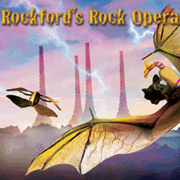 Rockford's Rock Opera is an original ecological musical story for children and adults which addresses the most serious environmental issues in a uniquely entertaining and yet thoughtful manner. And it's proving a huge hit around the world. Scripted by BBC comedian Steve Punt, and with music by Sweetapple, it tells the story of the Island of Infinity - home to all the world's extinct creatures.
Rockford's Rock Opera is an original ecological musical story for children and adults which addresses the most serious environmental issues in a uniquely entertaining and yet thoughtful manner. And it's proving a huge hit around the world. Scripted by BBC comedian Steve Punt, and with music by Sweetapple, it tells the story of the Island of Infinity - home to all the world's extinct creatures.
Rockford's Rock Opera is an amazing adventure in sound for adults and children. Part One of the story (six chapters: 52 minutes) is free! It features narration, read along text, characters, sound effects and music and is available as a free mp3 download and an audio stream.
Great to listen to on your computer, your ipod or burnt onto CD, this is a free audiobook like no other. The website also contains useful background information about the story (including key information and free downloadable teaching resources about extinction and ecology), how the story was made and the facts behind the fiction.
Visit the website by clicking on link to the left to access free book and lots of other resources, perhaps even buy some products. WWF is supported by this group.
 Mt Barney Lodge Birdweek commences on National Threatened Species Day. This is particularly relevant to the local Glossy Black Cockatoo.which frequents the area of Mt Barney. This bird has a very restricted diet - only eating from two types of casuarinas in South East Queensland.
Mt Barney Lodge Birdweek commences on National Threatened Species Day. This is particularly relevant to the local Glossy Black Cockatoo.which frequents the area of Mt Barney. This bird has a very restricted diet - only eating from two types of casuarinas in South East Queensland.
National Threatened Species day is held annually on 7 September. The federal government site provides factsheets on many endangered species. Find it here http://www.environment.gov.au/biodiversity/threatened/ts-day/index.html.
On 9-13th September there will be lots of activities to take part in at Mt Barney - a variety of professionally guided birdwalks, birding workshops, and an evening firedance spectacular.
Barry Davies one of Scenic Rim's internationally renown authority on birds will be guiding field trips. See LACA events page for more information about this week and this page for more information about our unique and vulnerable Glossy Black Cockatoo.